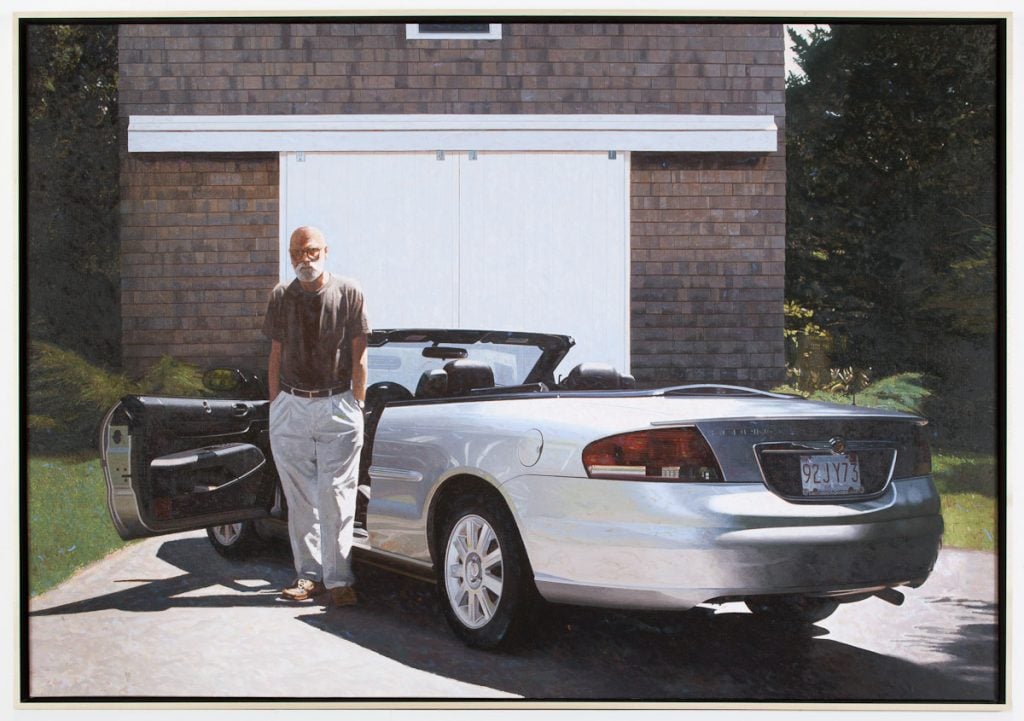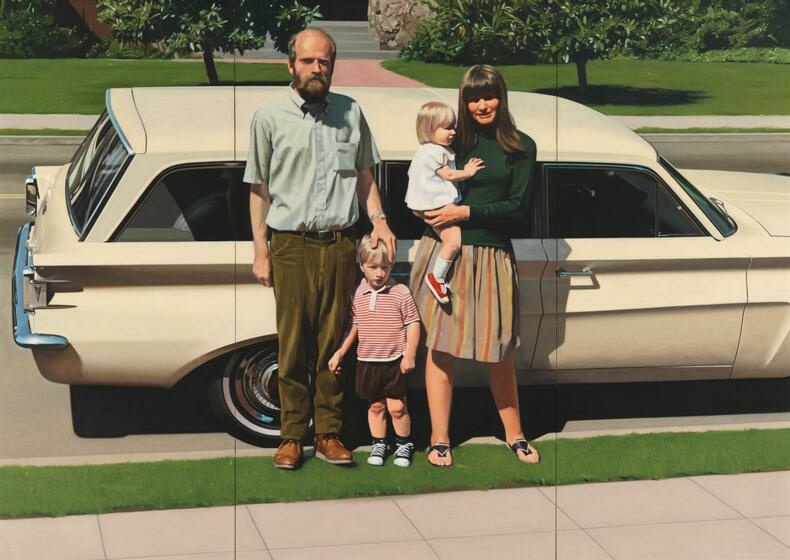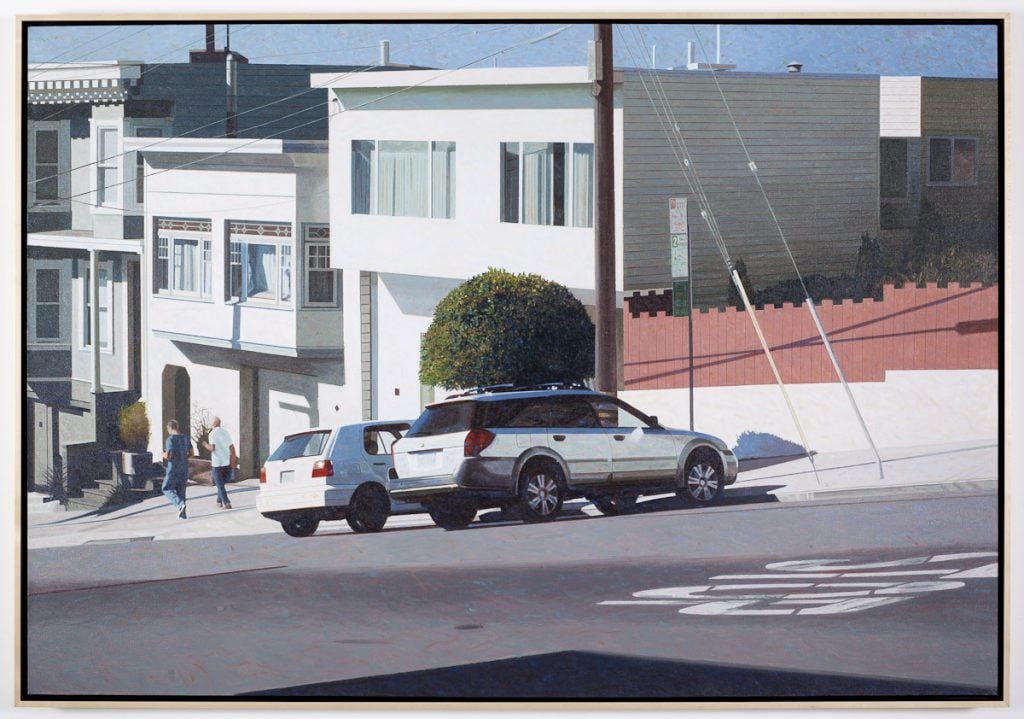People
Photorealist Painter Robert Bechtle, Who Captured the Bay Area in Painstakingly Faithful Detail, Has Died at 88
Bechtle's paintings almost always featured a car.

Bechtle's paintings almost always featured a car.

Caroline Goldstein

Robert Bechtle, the artist who painted photorealist scenes of Bay Area suburbia, died yesterday in Berkeley, California. He was 88 years old.
The artist’s son Max Bechtle confirmed to the San Francisco Chronicle that his father died from Lewy body syndrome, a type of progressive dementia.
Best known for his realistic oil paintings that captured snapshots of everyday life in the Bay Area, where he was a life-long resident, his work primarily featured automobile subjects, with occasional people. According to Bechtle’s ex-wife Nancy Gorrell, Bechtle began to paint what he saw around him as he struggled to overcome a creative block, and unwittingly found what would remain his primary subject: his own middle-class neighborhood streets, houses, and cars.

Robert Bechtle, ’61 Pontiac (1968-69). ©1969 Robert Bechtle, courtesy of the Whitney Museum of American Art.
“The reason he painted station wagons is that it’s what he drove, because he could load paintings diagonally in the back,” reports the Chronicle. In the painting ’61 Pontiac (1968-69), Bechtle and his young family stand in front of the cream-colored car, with a strip of manicured green lawn and sidewalk indicators in the foreground. Squinting in the glare of the California sunshine, “We all looked like dorks, and that’s what he wanted, because people related to it and still do,” Gorrell said.
The artist would use photographs as the basis for his paintings and watercolors, projecting them onto his canvases and tracing the shapes in exquisite detail, faithful to every shadow, highlight, and tonal nuance. From afar, and even in some cases up close, the works are mindbogglingly realistic.
“We are all incredibly saddened by Bob’s passing,” Barbara Gladstone, the artist’s New York dealer, told Artnet News in an email. “He first garnered attention for his photorealist paintings and works on paper, but he had an entirely singular and distinctive approach to depicting light, shadow, and architecture around his hometown in San Francisco that transcends simple categorization.”

Robert Bechtle, Potrero Golf Legacy (2012). Copyright Robert Bechtle. Courtesy Gladstone Gallery, New York, and Brussels.
Like his peers Wayne Thiebaud and Richard Diebenkorn, both of whom the artist admired, Bechtle’s works are imbued with a nostalgia that comes from the sepia-tinged color of his point-and-click photographs. But while Diebenkorn’s abstracted images of his West Coast neighborhood and Thiebuad’s paintings of pastries rely on pastel color palettes that flatter their subjects, Bechtle’s paintings are neutral and frank.
Bechtle was born on May 14, 1932, in San Francisco and was raised in Sacramento by his mother following his father’s death when he was 12. His mother worked as a schoolteacher to support Bob and his younger brother Ken, and when Bob began showing an interest in drawing and painting, she nurtured his budding talent.
In 1950, Bechtle enrolled at California College of Arts and Crafts in Oakland, where he earned a scholarship after winning a national competition. After completing his BFA, Bechtle began work as a commercial artist before being drafted to the army and sent to Berlin. He returned to the college (now called California College of the Arts) for his MFA, and taught at various University of California campuses before settling at San Francisco State University where he got tenure.
His first gallery show, in 1971, launched his successful career, which ultimately led to a 2005 retrospective at the San Francisco Museum of Modern Art that later traveled to Modern Art Museum at Fort Worth the following year. The catalogue featured an essay by artist Charles Ray, who was profoundly influenced by Bechtle’s painting Alameda Gran Torino (1974).
Bechtle and his first wife divorced in 1980, and the artist married art historian Whitney Chadwick, who survives him along with his two children.